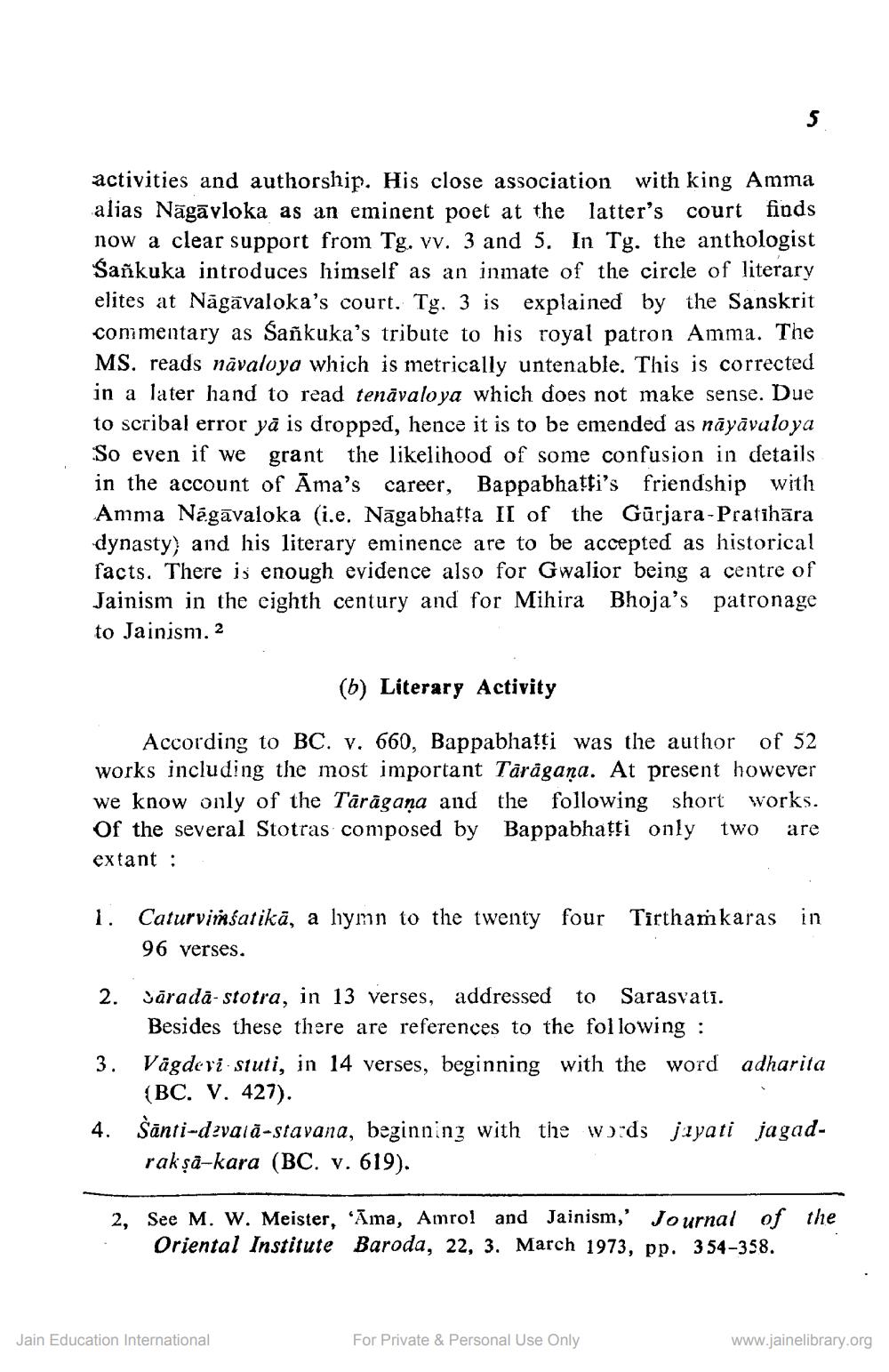________________
activities and authorship. His close association with king Amma alias Nāgāvloka as an eminent poet at the latter's court finds now a clear support from Tg. vv. 3 and 5. In Tg. the anthologist Sañkuka introduces himself as an inmate of the circle of literary elites at Nāgāvaloka's court. Tg. 3 is explained by the Sanskrit
nimentary as Sañkuka's tribute to his royal patron Amma. The MS. reads navaloya which is metrically untenable. This is corrected in a later hand to read tenāvaloya which does not make sense. Due to scribal error yā is dropped, hence it is to be emended as nāyāvaloya So even if we grant the likelihood of some confusion in details in the account of Āma's career, Bappabhatti's friendship with Amma Nāgāvaloka (i.e. Nāgabhatta II of the Gürjara-Pratihāra dynasty) and his literary eminence are to be accepted as historical facts. There is enough evidence also for Gwalior being a centre of Jainism in the eighth century and for Mihira Bhoja's patronage to Jainism. 2
(6) Literary Activity
According to BC. v. 660, Bappabhatti was the author of 52 works including the most important Tárågaņa. At present however we know only of the Tārāgana and the following short works. Of the several Stotras composed by Bappabhatti only two are extant :
1. Caturviñsatikā, a lymn to the twentyfour Tirthamkaras in
96 verses.
2. Sāradā-stotra, in 13 verses, addressed to Sarasvati.
Besides these there are references to the following: 3. Vägderi-stuti, in 14 verses, beginning with the word adharita
(BC. V. 427). 4. Šānti-devală-stavana, beginning with the words jayati jagad
rakșa-kara (BC. v. 619).
2, See M. W. Meister, ‘Ama, Amrol and Jainism,' Journal of the
Oriental Institute Baroda, 22, 3. March 1973, pp. 354-358.
Jain Education International
For Private & Personal Use Only
www.jainelibrary.org




